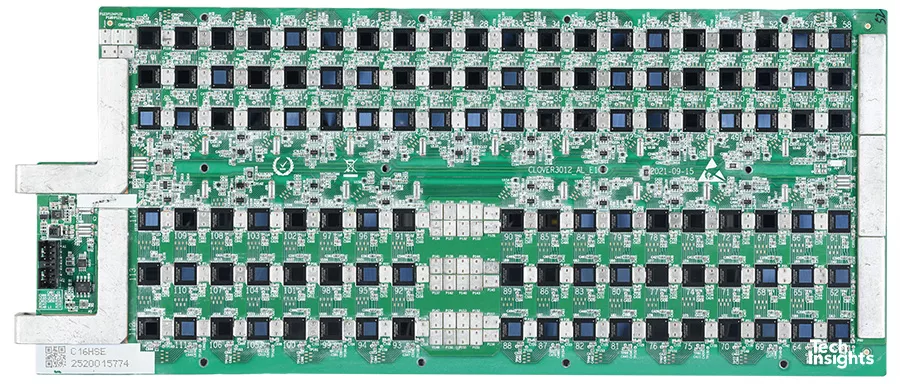China is neither the world’s biggest chip developer nor the top semiconductor manufacturer. Nonetheless, the nation’s rapidly expanding microelectronics sector seems to be producing a lot of patent applications. Mathys & Squire, a legal company specializing in intellectual property, found that in 2017, Chinese firms applied for more than half of the world’s semiconductor-related patents.
Global powers such as the U.S., China and the E.U. are competing to be leaders in semiconductor technology.
That says it all regarding their importance for the future of the economy.
Mathys & Squire
In 2022, a record number of 69,190 patents linked to microelectronics were submitted, a dramatic 59% rise from 43,380 only five years earlier. This advancement highlights how quickly this business is growing and how chips have an impact on every facet of contemporary life.
Chinese businesses filed 18,223 applications, making up 55% of all submissions worldwide. American businesses filed 26% fewer applications, placing them second. In comparison, according to Mathys & Squire, the UK was responsible for 179 patents, or 0.26% of all patents worldwide.
With 4,793 patents or 7% of all semiconductor-related patents worldwide, TSMC was the top individual filer. SanDisk, IBM, and Applied Materials each submitted applications for 49, 50, and 209 patents, respectively (more than all firms located in the UK combined).
It should be highlighted that Mathys & Squire only provided information on the quantity of patents, although the information included in those patents is much more significant. Sadly, it is hard to evaluate the significance of tens of thousands of patents. Yet, the quantity of patent applications submitted indicates how quickly the microelectronics business is growing.
Governments are increasingly concerned about the fragility of global supply chains and are taking steps to promote semiconductor research and production domestically.
New technologies which emerge from this global technology race will be protected by patents which are likely to be fiercely enforced.
China is currently in a global race with US in terms of technological advancements. US aims at achieving semiconductor dominance by providing large-scale incentives to semiconductor industries.
The $50 billion CHIPS Act is a government initiative to entice domestic and international businesses to establish chip manufacturing facilities in the US, with an emphasis on more sophisticated processors. As “the greatest investment in US industrial policy in 50 years,” the subsidy scheme has been dubbed.
The $39 billion in financing over five years is little in light of the industry’s total investment requirements and the objective of bringing manufacturing back from abroad. Moreover, it is a rare step into industrial policy by the US, which lacks a track record of recent success when compared to competing Asian nations.
China too isn’t behind with its technological advancements in the industry. It was recently reported that Huawei has submitted a patent application for an extreme ultraviolet (EUV) lithography scanner. Chinese chipmakers might fabricate semiconductors using sub-7nm-class technology if the business develops a scanner like this and achieves respectable productivity, uptime, and yields.

Chinese semiconductor company SMIC was reported to have started mass producing chips at its Fab SN1 facility near Shanghai, China, using its 14nm-class fabrication method.
Since early 2020, SMIC has been discussing its N+1 fabrication technique, which is generally regarded as the company’s 7nm-class node. It has been positioned as a low-cost alternative to TSMC’s N7 node, which depends on deep ultraviolet (DUV) lithography equipment. Compared to a chip made using SMIC’s 14nm process, N+1 hopes to cut power consumption by 57%, boost performance by 20%, and reduce the logic space by up to 55% to 63%.
US-China political rifts has harmed world economy at an unprecedented degree. With both countries seeking to surpass each other in numerous areas, the final consequence arrives at the customer in forms of high-cost items with reduced quality.
The post China Filed More Semiconductor-Related Patents Than the US in 2022 appeared first on Appuals.com.

0 Commentaires